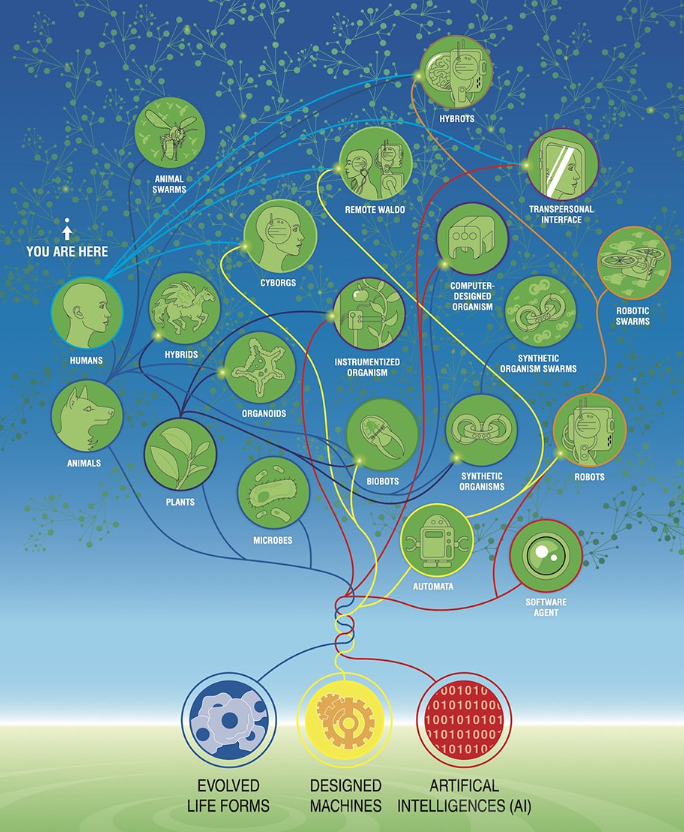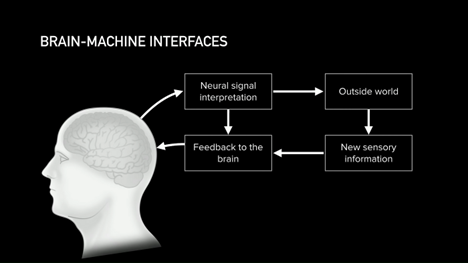|
Getting your Trinity Audio player ready...
|
By Andrew Macken
One of the most extraordinary experiments I’ve heard of in recent times was by world-leading biologist, Michael Levin, of Tufts University.
He and his team created ‘anthrobots’ which are tiny biological robots made from living human cells – in this case, from adult tracheal (windpipe) cells[1].
The anthrobots self-assemble into a new little organism that, by definition, has never existed on earth before through evolution.
Levin showed that when the anthrobots were applied to a collection of human neurons (in the lab) to which they had applied a deliberate wound (through a fine scratch), the anthrobots did two things: Firstly, they clustered together to form a kind of ‘super-bot cluster’, and secondly over the subsequent days, they began healing the wound by knitting the wound in the neuron back together.
This behavior is not what evolution has taught these cells to do.
Indeed, it was only when these cells (not edited in any way by Levin and his team) were freed from their prior system (a fully complete human body) that they expressed about half of their genome differently and chose a different set of roles and goals to pursue.
“Who would have thought that your tracheal cells which sit there in your airway for long periods of time dealing with dust particles and whatnot, when given the opportunity to reboot their selfhood, to reboot their multicellularity, would go on and make this kind of self-motile [capable of motion] thing that, by the way, has the ability to heal your body?”
While this extraordinary discovery has direct implications for all kinds of useful in-body repair technologies – such as tissue repair, targeted drug delivery, and blockage clearing – Levin proposes a much bigger idea: Could the cells represent a kind of ‘exploration interface’ into a vast ‘space of intelligence’ – like a nonphysical space of truths and problem-solving cognition – that exists and can be discovered?
A whole range of new companies will be created to explore and exploit this ‘space’ and ultimately create revolutionary new products and services.
That will open up new opportunities for investors who can understand this cutting-edge science – which includes the burgeoning field of neurotechnology being pioneered by the likes of Elon Musk – and its enormous potential.
Are we blind to minds?
But it’s not just cells, of course, that open up new intelligence. Levin wonders if all physical interfaces – from cells, to embryos, to bodies, to computers – are all just interfaces into this abstract space of intelligence. That is, they give us access to a wide range of ‘kinds of minds’.
Today, artificial intelligence (AI) is at the heart of change that most are focused on, excited by, and concerned about. And no doubt, AI is demonstrating new kinds of intelligence that, while unrecognizable to humans, are extremely useful when applied (for which we remain in the very early days).
But Levin might argue that AI is simply accessing another part of the vast space of intelligence. AI is a great additional discovery, but there is a lot more to come.
Levin believes that all natural life today accesses only a tiny corner of this vast space of intelligence. (Can you find where we are in the image below?)
What might that mean if its expanded?

Source: Michael Levin
Image credit: AI: A Bridge Toward Diverse Intelligence
Elon Musk accelerates the merging of human and machine
Alongside Levin’s discoveries and insights, we are seeing other huge advances where technology is massively expanding the capacity of our minds.
Several weeks ago, Elon Musk told an audience that his neurotechnology company, Neuralink, was building technology that will dramatically increase the bandwidth of the connection between a computer and a brain[2].
Neuralink does this through a surgical implant of a coin-sized device, called ‘the Link’, into the skull. The device has ultra-thin threads containing electrodes that interface with the brain’s neurons.
Neuralink has two goals:
- The human input bandwidth – the rate at which a human can receive and process information – today is typically around one Megabit per second, driven overwhelmingly by vision. Neuralink plans to increase this to one Gigabit per second (1 thousand times more).
- The human output bandwidth today – the rate at which humans can share information – is typically less than one bit per second. Neuralink wants to increase that to Megabits-per-second (one million times more), then Gigabits-per-second (one billion times more)!
The ultimate goal is to unlock the enormous untapped potential of your brain. That includes increasing human-to-human communication speeds (via telepathy) by more than one thousand times, or even one million times.
Nearer term implications are also exciting. Neuralink is expected to be able to restore lost functionality for individuals with disabilities, and assist in treating neurological and psychiatric conditions.

Source: Neuralink
A very different future
Taking stock of where we are today, we know that disciplines – from biology, to chemistry, to physics, to computer science and AI – are merging. And the pace of change is accelerating.
AI experts, including Musk, believe we are at most one year away from the latest AI reasoning models discovering new physics and science, previously undiscovered by humans.
Michael Levin believes that we might have only just scratched the surface of a vast ‘space of intelligence’.
Not only is AI expanding our access into this space, but we are learning that living cells are naturally capable of accessing and showing us new parts of this space – or new ‘kinds of minds’, as Levin might say.
And the direct merging and integration of biological and nonbiological intelligent systems has begun.
The future is going to look very different to human history to date.
The new language of investing
For investors to succeed in this emerging new world, they will need to tap into valuable insights that stem from the intersection of disciplines (as this essay illustrates).
The key to investment success will be multidisciplinary capabilities.
While financial accounting has been the language of investments over the last generation, science will be the language for the coming generation (it arguably already is).
Investment analysis anchored in first principles – the importance of durable competitive advantages, understanding flywheels, and maintaining price/value discipline – will be critical.
Tomorrow’s winning companies may look quite different to those of the past, but the underlying principles of attractive investment opportunities will remain the same.
Note:
[1] (Forms of life, forms of mind) Meet the Anthrobots: a new living entity with much to teach us, Levin, November 2023
[2] (YouTube) Neuralink Update, Summer 2025, July 2025
Andrew Macken is the Chief Investment Officer with Montaka Global Investments. To learn more about Montaka, please call +612 7202 0100 or leave us a line at montaka.com/contact-us
Podcast: Join the Montaka Global Investments team on Spotify as they chat about the market dynamics that shape their investing decisions in Spotlight Series Podcast. Follow along as we share real-time examples and investing tips that govern our stock picks. To listen, please click on this link.




